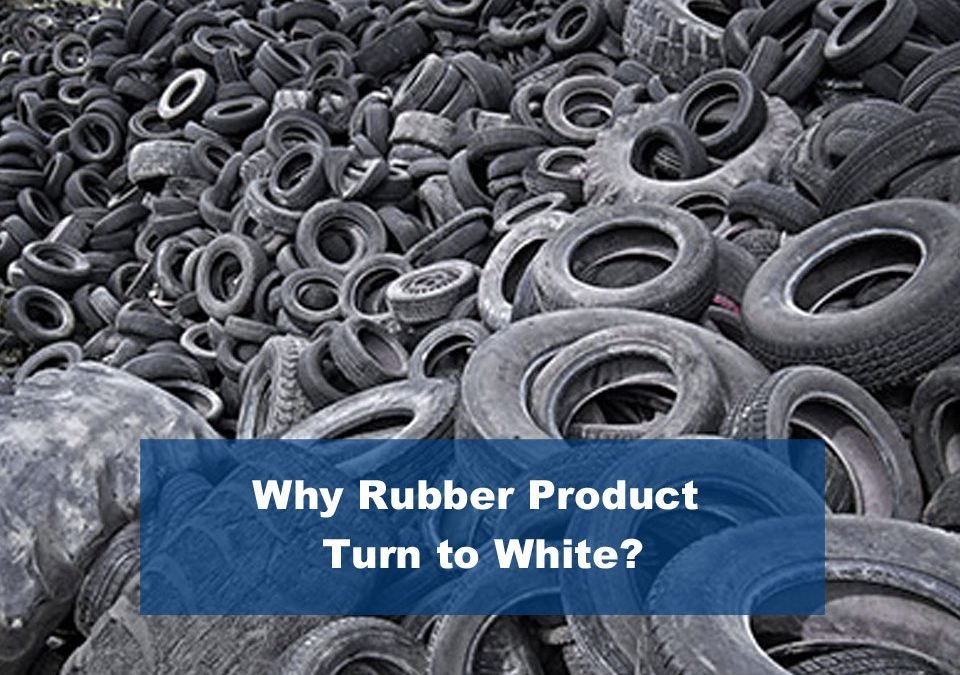In daily life, many people must have seen the whitening of rubber products after a period of use. For example, when the humidity is high, the paint is easy to whiten.
Rubber is divided into unvulcanized rubber (hereinafter referred to as rubber) and vulcanized rubber (hereinafter referred to as products). The frosting of rubber includes frosting on the surface of the rubber and frosting on the surface of the product. Bloom is the appearance of liquid or solid compounding agents moving from the inside of the rubber to the outside of the rubber. It can be seen that the compounding agent inside the rubber separates, which constitutes a blooming. To sum up the methods of frosting rubber, there are roughly three types. That is, dusting, wax spraying, and oil spraying (also called exudation).
Dusting is a powdery compounding agent such as vulcanizing agent, accelerator, active agent, anti-aging agent, filler, etc. separated on the rubber surface to form a layer of powder.
spray wax is white wax, ozokerite and other waxy substances separated on the surface of the rubber to form a layer of wax film.
oil spray is liquid compounding agents such as softeners, tackifiers, lubricants, plasticizers, etc. separated on the surface of the rubber to form a layer of oil. In practice, the frosting of the rubber surface is sometimes presented in one way, and sometimes presented in two or three ways together.
(1) Improper formula planning:
Full spray: common in sulfur, accelerators, active agents, anti-aging agents. Relocation spray: common in processing aids and relocation anti-aging agents. Antistatic agent generation and ejection: common in sulfur vulcanization system accelerators and use the reaction product to stay in response: common in organic peroxide vulcanization system low molecular substances excessive stress ejection: common in inorganic fillers: such as calcium carbonate.
(2) Incorrect technical operation:
Uneven mixing constitutes poor dispersion, partly exceeding fullness
The mixing temperature is too high, which makes the compounding agent partly excessive
Inaccurate weighing (more weighing, less weighing, missing weighing, wrong weighing)
The vulcanization temperature is too high, and the polymer degrades to cause blooming
The vulcanization temperature is too low, and the vulcanization of under-sulfur blooming caused by incomplete response will not work at the moment, and the mold release agent or mold washing water that constitutes the under-sulfur blooming spray is improperly operated, which constitutes the appearance of white rubber.
(3) The quality of raw materials
The quality of raw materials fluctuates due to different origins, different production methods, different technologies, and different batches. The raw materials are very different. The composition technology of the raw rubber: polymerization temperature, catalyst, monomer composition, etc. The solubility is different. Changes in purity, moisture, ash, pH, physical properties, etc.
(4) Poor storage conditions. Temperature: The solubility of compounding agent in rubber usually rises and falls with the rise and fall of temperature. Time (pressure and humidity): The pressure experienced when rubber is stored, the humidity of the surrounding air, and the solubility of compounding agent at all times. Influence, usually not much. However, if the pressure is high, the compounding agent in the rubber at the pressure-bearing part will form a crystal nucleus, which separates from the rubber surface, forming a bloom; if the air humidity is too high, the compounding agent with high polarity in the rubber will oppose the raw rubber ( The effect of non-polar) is weakened, the solubility of the compounding agent is reduced, and then the frosting is caused; the longer the storage time, the more obvious the frosting of the rubber surface, because the temperature and humidity of the air in the storage environment are different and not the same as the season changes. Larger, it is easy to change the solubility of the compounding agent, and then cause blooming.
(5) Rubber aging
Rubber aging mostly causes damage to the intact and balanced network structure of the vulcaniz Solubility in the system. Therefore, those compounding ingredients that are partly over-full will be separated from the rubber to form a bloom.


